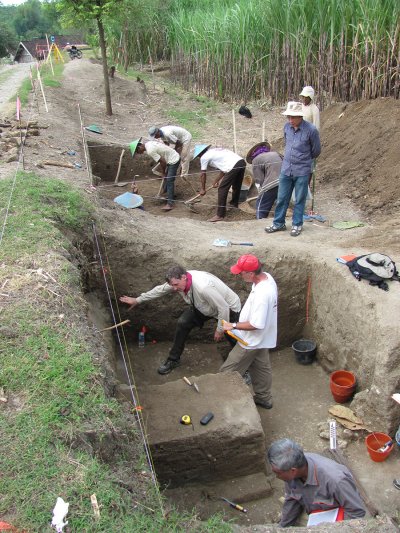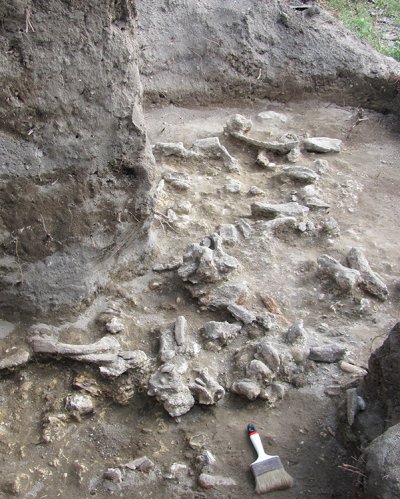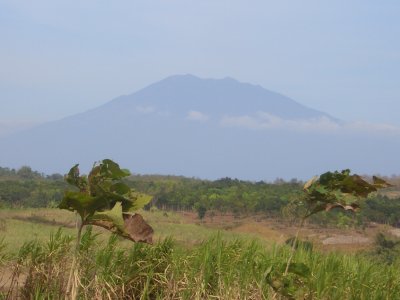The last known members of the Homo erectus species were killed in a "mass death" event between 117,000 and 108,000 ago, scientists have said. By re-analyzing remains first discovered almost a century ago, researchers were able to better confine the date they died, potentially providing a clearer insight into when and why our ancient ancestors went extinct.
Homo erectus is the longest lived hominin species, having first appeared in Africa around two million years ago. The species migrated into Asia before ending up on the Indonesian island of Java. It was the first human species to walk fully upright, and had body proportions similar to ours—with shorter arms and longer legs compared to other hominins.
When the species disappeared is unclear, however. In the 1930s, archaeologists uncovered a bone site just above the Solo River at Ngandong, Central Java. It contained 12 skull caps and two lower leg bones belonging to Homo erectus.
At the time there were few methods available to accurately date the site, and the fossils were estimated to be anything between 550,000 to 27,000 years old.
"The original excavation occurred before even radiocarbon and uranium series dating were developed," paleoanthropologist Russell Ciochon, from the University of Iowa, told Newsweek.
Ciochon is one of the researchers who have returned to Ngandong to reassess the site and the Homo erectus remains found there. Using a series of dating techniques, the team was able to determine the fossils were between 117,000 and 108,000 years old. This makes them to latest known Homo erectus fossils in the world. Findings are published in the journal Nature.
Researchers believe the individuals—all adults—were killed in a "mass death" event upstream and were subsequently washed down the river during a flood and deposited where they were eventually found, over 100,000 years later. There are many theories as to what caused the mass death, including a volcanic mudflow.
"At present we don't know what this event could have been but the carcasses and bones that were lying on the landscape were incorporated into floodwaters and deposited downstream at the site of Ngandong where the river narrows slightly," study author Kira Westaway, from Macquarie University, Australia, told Newsweek.
"It's likely that the fossils got caught in a log jam (build up of large woody debris in the channel) to form a sort of 'carcass jam' and then were buried in the river sediments."
Because previous dating suggested Homo erectus may have survived on Java until about 27,000 years ago, it was thought the species may have coexisted with modern humans for up to 50,000 years. It was also suggested our arrival may have played a role in their demise. However, the new dates show this cannot be the case. So what caused Homo erectus to go extinct?
In the study, the researchers show that at the time of the mass death, the environment in Java was changing substantially, shifting from open woodlands towards rainforest. This may indicate that Homo erectus extinction was related to the changing climate.






"Humidity and moisture levels on Java vary between glacial and interglacial periods," Ciochon said. "When the area became wetter, the rainforest expanded east across Java replacing the open woodland environment associated with Homo erectus. The demise of Homo erectus on Java coincides with this rainforest expansion, and the changing environment likely contributed to the demise of Homo erectus."
Westaway added that this was a "pivotal period" of environmental and climatic change. "The encroaching warmer and more humid environment would have caused problems for the essentially open forest fauna associated with Ngandong," she told Newsweek. "The new timeline suggests that the drier conditions in Solo River valley containing the site of Ngandong probably persevered for longer than expected."
This region served as a refuge for the remaining population of Homo erectus, she said. "But by 117,000 to 108,000 years ago this refugia could no longer be supported by the prevailing climatic and environmental changes and the Ngandong erectus and its associated fauna disappeared from the fossil record."
The researchers say their dates are not necessarily the point at which H. erectus went extinct, but is the point when the last known individuals died. There may well fossils from later that have not been found.
"Ngandong is the youngest known Homo erectus site in the world, and dating this site provides insights into the extinction of one of our direct ancestors," Ciochon said.
Westaway said: "Now that we have a convincing timeline for the last appearance of Homo erectus we can start to explore exactly who they interacted with and the potential cause/s of extinctions—this the next big step but it may be an even greater challenge than the timing."
Uncommon Knowledge
Newsweek is committed to challenging conventional wisdom and finding connections in the search for common ground.
Newsweek is committed to challenging conventional wisdom and finding connections in the search for common ground.
About the writer
Hannah Osborne is Nesweek's Science Editor, based in London, UK. Hannah joined Newsweek in 2017 from IBTimes UK. She is ... Read more





